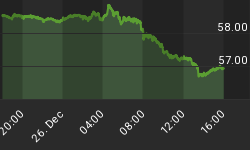The following is part of Pivotal Events that was published for our subscribers September 3, 2015.
Credit Markets
We have considered that the course of US credit spreads has been the conduit whereby problems in the market city on the Yangtze would wash up on the shores of the Hudson and Thames Rivers.
In 1998, the path we were using led to the LTCM disaster, which was accelerated in the middle of August by a "problem" with Russia's credit market. However, Moscow was not the center of a huge financial bubble. The focus of intense speculation was the "Convergence" of Western European credit spreads. LTCM earnestly believed that the ECB could narrow spreads at will.
In 2007, the path through July-August ended a classic bubble.
In 2008, the extension of widening in that fateful July-August forced the ultimate failure.
For whatever reason, China's Bubble completed in June, which fits the great bubbles of the distant past.
And it appears, the course of spreads in the senior economy sets the path to the ultimate liquidity crisis.
The latest move was likely to become dramatic in early August. It did, as the spread jumped from 214 bps on August 11th to 229 bps on Black Friday, August 24th. Since then spreads have been consolidating.
As with previous examples, once this trend starts - following excessive speculation - it continues.
It is uncertain how long the consolidation in spreads will last. Two weeks or four?
The next breakout in widening will be devastating.
Long Treasuries rallied up to a distinctive high at 128.64 on the TLT. Also accomplished on August 24th. Traders were advised to flatten positions. The gambit of Treasuries up with stock market hits has been successful a number of times. Will it be successful "one more time" on the next contraction?
We have been out of low-grade stuff since the peak in June 2014. Investors have been in 3 to 4-year high-grade US corporates. Outside of the US, the pickup on the firmer dollar has been a plus.
JNK became very oversold on the Daily on the 24th. The rebound has been from 35.83 to 37. The high in May was 39.65. The high in June 2014 was 41.81.
Traditionally, in this kind of a market credit spreads have had little regard for central bankers and their theories.
Long Term Capital Management:
The rapid collapse of the then huge fund, LTCM, prompted an almost hysterical response by central bankers. One, because it was so big. Two, because they had loaned money directly to the highly-leveraged fund. Even worse, the Bank of Italy had bought an equity position.
In June last year, Financial Times headlined "Central Banks Shift into Shares". They were stuffing equities into their reserves because of very low interest rates.
Last week, we guessed that "Officialdom will lay on some massive support going into September."
Today, Draghi announced ECB would increase its equity positions.
Commodities
Last week, we noted that commodities could enjoy a brief rally.
The DBC has bounced from 14.33 on August 27th to 15.79 on Monday.
This is precarious for technical reasons and the fundamentals should be reviewed. Our Classic Bubble peaked in 2007 and the features of the post-bubble condition is a firm senior currency and weak commodities.
Traditionally, in agriculture chronically weak prices forced farmers to plant more. The saying has been "from fence post to fence post".
Most commodities will suffer the same compulsions. Even petroleum producers will be doing the equivalent of "fence post to fence post". We are now looking for a seasonal low in December - January.
Precious Metals
Not much to add to last week's comments.
The transition from the old regime of "Fed bad - Gold up" to gold mining profits increasing in a post-bubble deflation will take a while.
In the meantime, gold equities remain vulnerable to problems in the orthodox financial world.
The gold/silver ratio jumped to almost 80 on Black Monday and it has drifted down to 76 this morning.
Rising through the last high at 80 would indicate further financial pressures.
NYSE Margin Debt: S&P, July Post

Source: Doug Short
- The key feature is the peak in margin debt. April 2015.
- Followed by the second attempt to increase leverage. June 2015.
- The actual S&P peak is some months after the peak in leverage. July 2105.
- With the worst August in 17 years, the next post will be down sharply.
Link to September 4, 2015 Bob Hoye interview on TalkDigitalNetwork.com: http://talkdigitalnetwork.com/2015/09/central-bankers-powerless-to-stop-market-decline/
Listen to the Bob Hoye Podcast every Friday afternoon at TalkDigitalNetwork.com
















